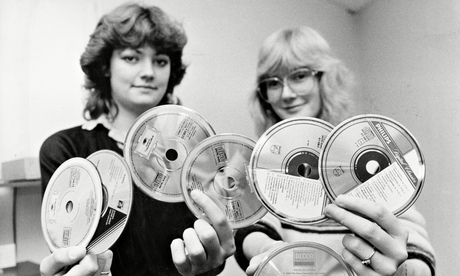
Jacques Heemskerk, research scientist: 'When the CD came in, I got rid of all my old Rolling Stones and Beatles vinyl. It still hurts'
Interviews by Dave Simpson (The Guardian)
Jacques Heemskerk, research scientist, Philips
In the 1970s, Philips felt that the vinyl disc was coming to the end of its lifetime, because it was cumbersome, dusty and scratchy. In the US, the music market had been completely taken over by the cassette tape, but they were mostly used in cars and were awful quality. So the idea was to come up with a small disc that would be digital, not analogue, for better sound.
When I came in, Philips had a project called the video long player (VLP) – later called LaserVision – that put video on a 12in optical disc that looked like a shiny vinyl record. That didn't fly, but it was a primitive DVD. At the same time, both Philips and Sony were researching new audio discs. Because both companies had seen what had happened in video – where rival VHS and Betamax formats held each other back – we agreed to develop a standard disc together.
At first, there was mistrust on both sides. But as soon as you start talking, you realise the other team have the same problems and experiences. So you see you're not so different after all.
That said, one problem was that the Japanese people often use the word "hai", which means "yes", to say "we understand you" or "we know what you mean". So very often when they were saying "hai" we thought we had reached an agreement, but they were just saying that they understood us. It was very frustrating.
We had two years of meetings and discussions before .............
http://www.theguardian.com/music/2014/jul/29/how-we-made-the-compact-disc-cd






